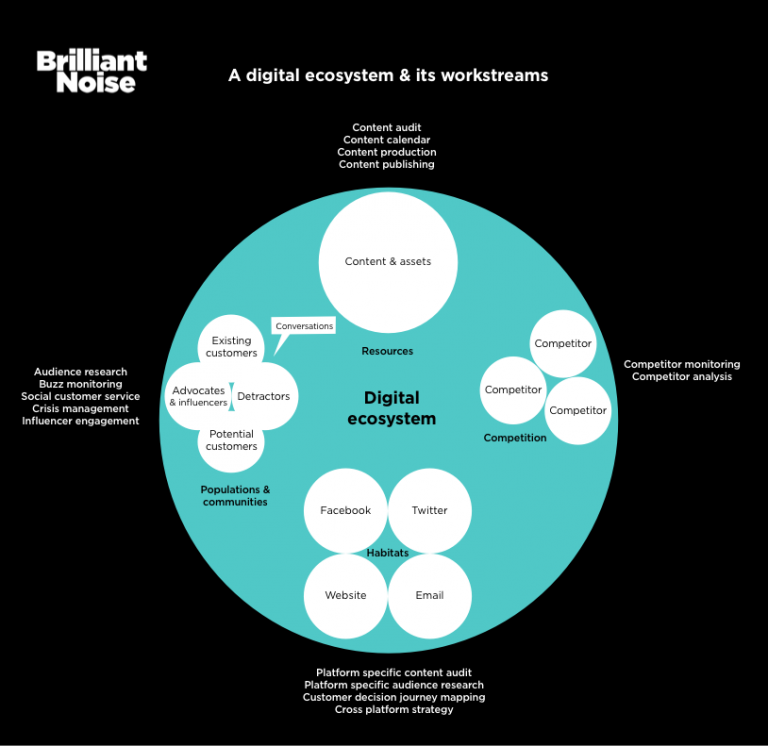‘Digital ecosystem’ is a phrase that is often mis-used or over-used in our industry – but examined closely and used correctly, the concept is useful and apt.Having studied animal communication, behaviour and habitats, I like to understand the world from an ecological perspective. This translates very well to understanding digital ecosystems. We can map the key elements of a biological ecosystem to those online, and use ecological research methods to analyse them.In biology we think about an ecosystem in terms of habitats (broad and niche), communities, populatio
We can also study the individual needs of a population in relation to the resources it requires, for example what content they engage with the most, and those needs change depending on where the population is at that time. When on your website, they will be looking for a very different interaction with you than when they’re talking about you on Twitter. The ecosystem model allows us to focus on exactly what area we’re working with. This can help us to write better briefs, better proposals, and to deliver work that does what it needs to do, without trying to cover everything in one project.Audience researchCampaigns are more relevant to your audience because you know them better.Audience researchCampaigns are more relevant to your audience because you know them better.Audience researchCampaigns are more relevant to your audience because you know them better.Crisis managementReduced risk due to ability to act early in a crisis, when alerted to rising online discussion of an issue.Crisis managementReduced risk due to ability to act early in a crisis, when alerted to rising online discussion of an issue.- Habitats – broad and niche platforms and owned, bought and earned media;
- Communities – a community of parents in the habitat of MumsNet;
- Populations – your target audience, your staff;
- Predators – trolls and detractors;
- Competitors – that other brand;
- Resources – useful content or a budget.

| Work stream | Example benefits (there are more |
|---|---|
| Audience research | Campaigns are more relevant to your audience because you know them better. |
| Buzz monitoring | SEO benefit of using folksonomy rather than corporate taxonomy. |
| Social customer service | Improved relationship with customers due to ability to proactively deliver customer service. |
| Crisis management | Reduced risk due to ability to act early in a crisis, when alerted to rising online discussion of an issue. |
| Influencer engagement | Messaging has more kudos when influencers advocate your brand. |
| Content audit / calendar / production / publishing | Deliver an integrated cross platform content strategy as you are able to spot gaps and opportunities. |
| Competitor monitoring / analysis | Learn from competitor successes and failures. |
| Customer decision journey mapping to platforms / cross platform strategy | Deliver appropriate content on the platforms most suited to the customer at certain stages of the CDJ. |
